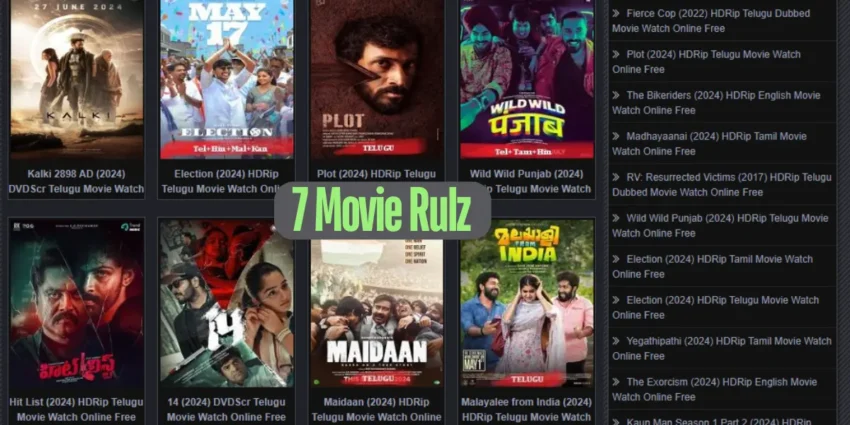Movies have always been a significant part of our culture, offering a mirror to our society and a window into different worlds. Today, we explore the 7 Movie Rulz that define the art and business of filmmaking. Whether you’re a casual viewer, a film enthusiast, or an aspiring filmmaker, understanding these rules can enhance your appreciation and knowledge of cinema.
1. The Rule of Storytelling
Storytelling is the cornerstone of any great film. A compelling narrative captivates the audience, drawing them into the world created by the filmmakers. The story must have a clear structure, with a beginning, middle, and end, while also incorporating elements such as conflict, character development, and resolution. A well-told story can transcend genres and periods, making it timeless.
1: Character Development
Characters are the heart of any story. They drive the plot and engage the audience emotionally. Character development involves creating multi-dimensional characters with distinct personalities, motivations, and arcs. This development should be consistent and logical, allowing the audience to understand and relate to the characters’ journeys.
2: Plot Structure
A strong plot structure is essential for maintaining the audience’s interest. This includes a clear exposition, rising action, climax, falling action, and resolution. Each part of the plot should seamlessly connect to the next, ensuring a coherent and engaging narrative, like 7 Movie Rulz
2. The Rule of Visual Storytelling
Cinema is a visual medium, and the power of visual storytelling cannot be overstated. Directors use visual elements to convey emotions, themes, and subtext without relying solely on dialogue. This includes the use of cinematography, color palettes, lighting, and set design.
1: Cinematography
Cinematography is the art of capturing images on film. It involves decisions about camera angles, movements, and composition. A skilled cinematographer can create visually stunning scenes that enhance the storytelling and evoke specific emotions.
2: Lighting and Color
Lighting and color play a crucial role in setting the mood and tone of a film. Lighting can create dramatic contrasts, highlight important details, and convey the time of day or weather conditions. Color palettes are carefully chosen to evoke specific feelings and symbolize themes.
3. The Rule of Sound Design
Sound design is an often overlooked but vital component of filmmaking. It includes dialogue, sound effects, and music. A well-crafted soundscape can enhance the realism of a scene, build tension, and provide additional layers of meaning.
1: Dialogue
Dialogue should be natural and reflective of the characters’ personalities and backgrounds. It should also serve the story, revealing information about the plot and characters without being overly expository.
2: Music and Sound Effects
Music and sound effects are powerful tools for creating atmosphere and emotion. A well-composed score can elevate a film’s emotional impact, while sound effects can make the world of the film feel more immersive and real.
4. The Rule of Editing
Editing is where the magic of filmmaking truly happens. It involves piecing together shots, scenes, and sequences to create a coherent and engaging narrative. Good editing can control the pacing of a film, build tension, and highlight important moments.
1: Pacing
Pacing refers to the rhythm and speed at which the story unfolds. It can vary throughout the film, with slower pacing for character development and faster pacing for action sequences. Effective pacing keeps the audience engaged and maintains the story’s momentum.
2: Continuity and Transitions
Continuity ensures that the film’s visual and narrative elements are consistent and logical from scene to scene. Transitions between scenes should be smooth and purposeful, guiding the audience through the story without jarring interruptions.
5. The Rule of Genre Conventions
Every genre has its conventions and tropes that audiences expect. Filmmakers must understand these genre conventions to meet audience expectations while also finding ways to subvert or innovate within the genre.
1: Understanding Genre
Each genre—whether it’s action, drama, comedy, horror, or science fiction—has specific elements that define it. Understanding these elements helps filmmakers create satisfying and cohesive works within their chosen genre.
2: Innovation within Genre
While it’s important to adhere to genre conventions, innovation is equally crucial. Filmmakers should find unique ways to tell familiar stories, offering fresh perspectives and surprising twists that keep the genre vibrant and exciting.
6. The Rule of Audience Engagement
Engaging the audience is paramount. This involves creating relatable characters, a compelling plot, and immersive visuals and sounds. Audience engagement also extends beyond the film itself, encompassing marketing, distribution, and audience interaction.
1: Marketing and Distribution
Effective marketing and distribution strategies are essential for reaching the target audience. This includes trailers, posters, social media campaigns, and film festivals. A well-marketed film can generate buzz and attract a larger audience.
2: Audience Interaction
Audience interaction doesn’t end when the credits roll. Filmmakers should engage with audiences through social media, Q&A sessions, and fan events. This helps build a loyal fan base and encourages word-of-mouth promotion.
7. The Rule of Innovation
The film industry is constantly evolving, and innovation is key to staying relevant. This includes embracing new technologies, storytelling techniques, and distribution methods. Filmmakers should always be on the lookout for ways to push the boundaries of the medium.
1: Technological Advancements
Advancements in technology have revolutionized filmmaking. From digital cameras to CGI, filmmakers have more tools than ever to bring their visions to life. Embracing these technologies can enhance the visual and narrative quality of a film.
2: New Storytelling Techniques
New storytelling techniques, such as non-linear narratives and interactive films, offer fresh ways to engage audiences. Filmmakers should experiment with different formats and styles to keep their work innovative and exciting.
Conclusion
Understanding and applying these 7 Movie Rulz can elevate any film, making it more compelling, visually stunning, and emotionally resonant. By mastering the art of storytelling, visual and sound design, editing, genre conventions, audience engagement, and innovation, filmmakers can create works that stand out in the crowded world of cinema 7 Movie Rulz.
